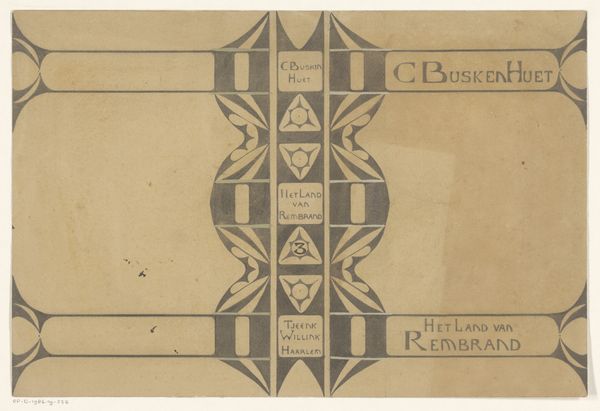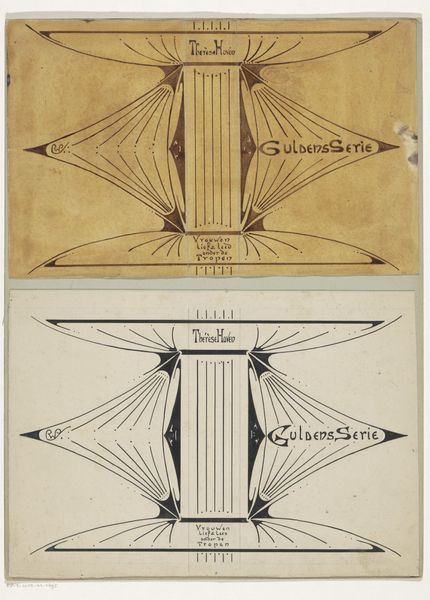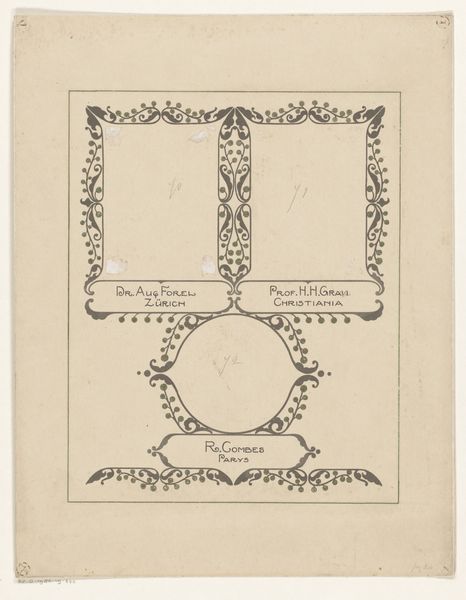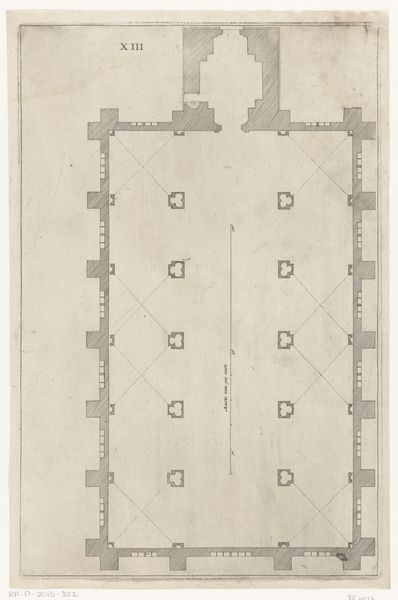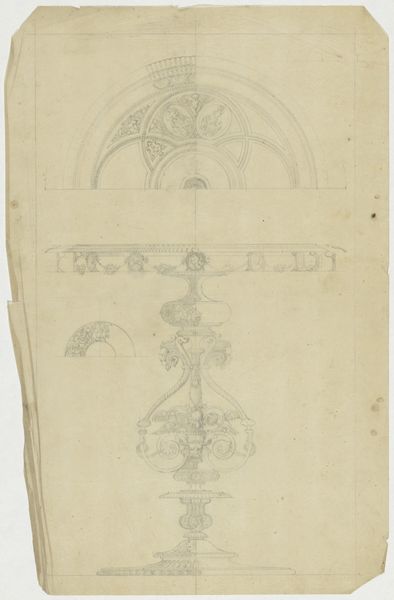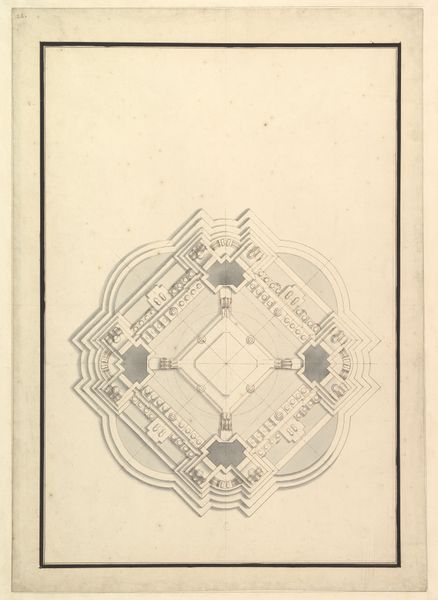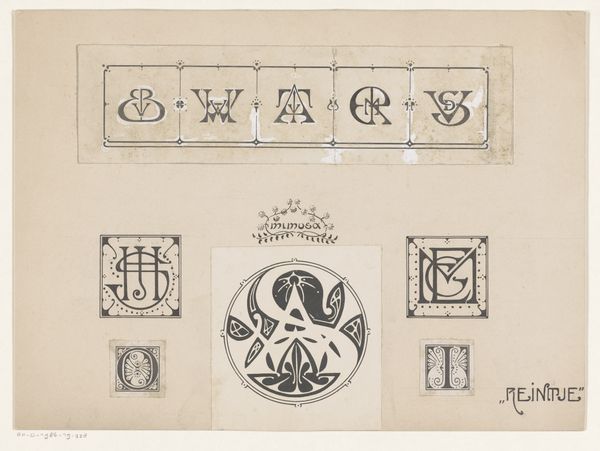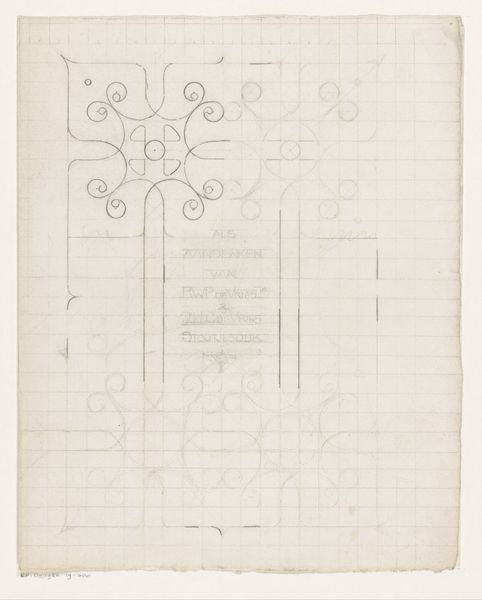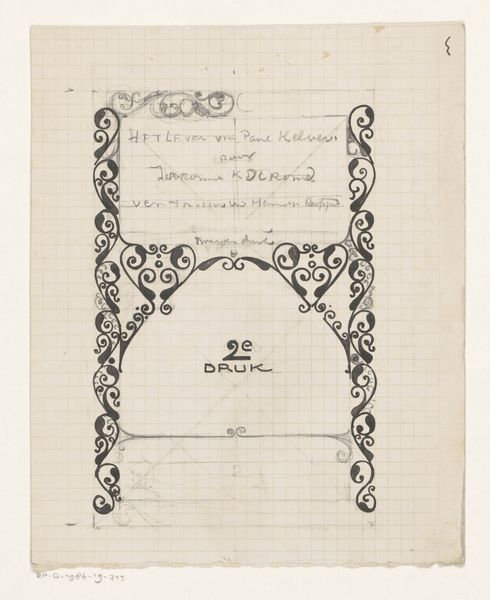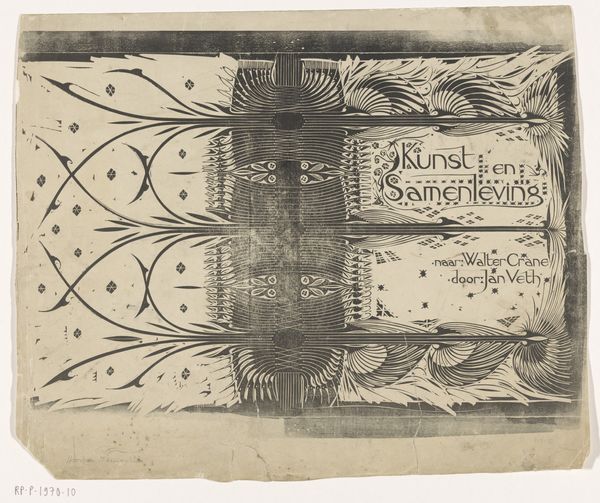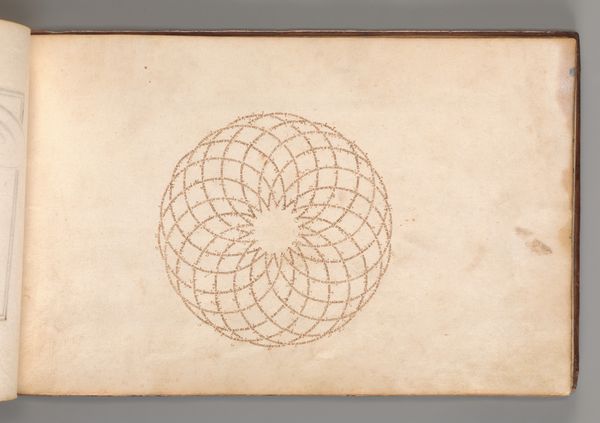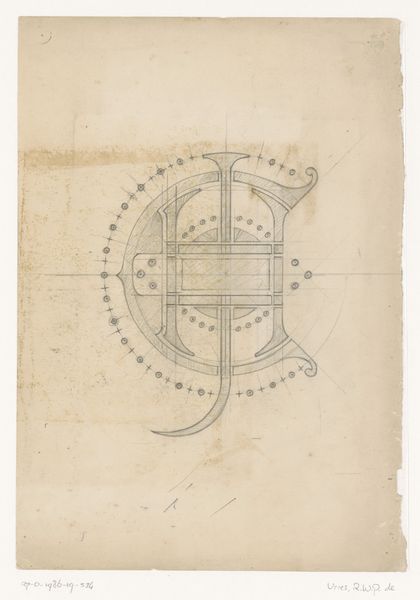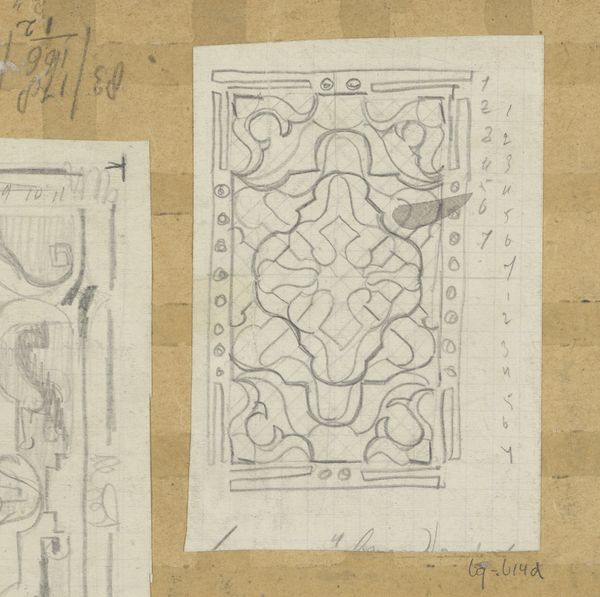
Bandontwerp voor: Cd. Busken Huet, Het land van Rembrand, 1898 1898
drawing, graphic-art, paper, typography, ink, poster
drawing
graphic-art
aged paper
toned paper
art-nouveau
old engraving style
hand drawn type
paper
personal sketchbook
typography
ink
geometric
pen-ink sketch
ink colored
pen work
sketchbook drawing
decorative-art
poster
sketchbook art
Dimensions: height 225 mm, width 334 mm
Copyright: Rijks Museum: Open Domain
Editor: We're looking at a cover design, “Bandontwerp voor: Cd. Busken Huet, Het land van Rembrand,” created in 1898 by Reinier Willem Petrus de Vries. It appears to be ink on paper, with Art Nouveau styling. The design feels very intentional and structured, almost architectural. How does this design reflect the broader artistic climate of the late 19th century? Curator: This piece really speaks to the emerging visual culture of the period. The late 19th century witnessed the rise of mass media, and with it, the increasing importance of graphic design and book cover art. The Art Nouveau style, seen here in the flowing lines and stylized floral motifs, was often used to signify modernity and sophistication. It helped to visually elevate products, including books. Editor: So, was it more about making the book look good, rather than directly illustrating its contents? Curator: Precisely! Consider how the book cover operates within a system of cultural values. The publisher used the design as a way to brand the book and connect with potential readers who are visually drawn in. Also, think about the title itself, "Het Land van Rembrand" ("The Land of Rembrandt") evoking a romanticised image of Dutch art history. Editor: I see that connection to Dutch identity. It’s interesting how a cover design can communicate all that. I had originally thought it was simply pretty decoration. Curator: The design contributes to how the book was received. Consider also the role of exhibition spaces at the time, art schools, and how the design elements become recognized and interpreted. What is your sense now of its function within its socio-cultural moment? Editor: Now, thinking about the time period, the Art Nouveau style would make it feel current and connect the book with a sense of elevated cultural experience. It's more than just a cover; it's an indicator of status and taste, and the beginnings of our visual consumerism. Curator: Exactly. Hopefully it provides some food for thought around the public role of art.
Comments
No comments
Be the first to comment and join the conversation on the ultimate creative platform.
